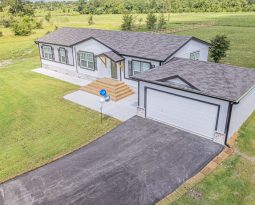Is a Manufactured Home a Sound Post Pandemic Investment?
By all accounts, the end of the devastating pandemic that has altered every aspect of our lives looks to be on the horizon. Left in its wake is a dramatically different home building and home buying dynamic..
New manufactured home production and sales have continued throughout the pandemic, albeit with shipment delays and slightly higher prices as a result of building component shortages such as lumber. Even with those impediments, the manufactured home sales backlog pipeline has actually increased.
Before the onslaught of the pandemic, the widening homeownership affordability gap had reached a critical level. The coronavirus has dramatically further curtailed the realization of homeownership – in the traditional sense – especially for millennials and first-time home buyers.
Many home buyers are discovering that a new custom-built manufactured home will meet all the requirements of high-quality homeownership and will have a cost about 50% less than a comparable new site-built home and will be equal and often superior in every respect, including value appreciation, when sited equally.
The following are some brief information and statistics outlining the pandemic effects on the present and future residential housing markets.
The pandemic and lumber shortage has worsened the situation
America is running out of houses amid a historic housing shortage and record high selling prices.
Freddie Mac has estimated a shortage of 3.8 million homes. There are 40% fewer homes on the market than last year, a Black Knight report found.
The shortage is a result of several things: contractor underbuilding over the last dozen years, a lumber shortage, and the pandemic.
Lumber factories shut down almost immediately in March 2020 because of safety restrictions. As demand spiked, lumber prices jumped by almost 200% since April 2020. It led to an average unexpected price increase of $24,000 for new homes in the past year, according to the National Association of Realtors (NAR), one aspect of a nationwide record high in housing prices. The national median home-sale price hit a new high of $353,000 in March, according to Redfin. Housing prices are up 18% year over year, with no indications that home prices are going down at any point in the future.
Often potential home buyers never consider a manufactured home for purchase because of preconceived notions of the “mobile home” of long ago. One conception that has been passed down from generation to generation is that a manufactured home is just another name for a “mobile home” and as such, they are like automobiles; “they depreciate.” That characterization has not been accurate for many years. In fact, there have been zero “mobile homes” produced since 1976 with the passage of federal legislation that eliminated mobile home production and established the HUD Code with stringent building requirements for manufactured housing that are more stringent than typical site-built housing.
Manufactured home value appreciation on par with site-built homes
Many have long held the assumption that manufactured homes don’t increase in value — or, at the very least, they rise in value at a much slower rate than traditional site-built homes.
The reality is that a manufactured home is generally a great investment. Appreciation of both manufactured homes and site-built homes are affected by the same factors; the stability of the community (subdivision, neighborhood), supply and demand in the local market, type of home, how the home is maintained, and location, location, location. If all factors are equal, today’s manufactured home can appreciate in the same way as a site-built home.







